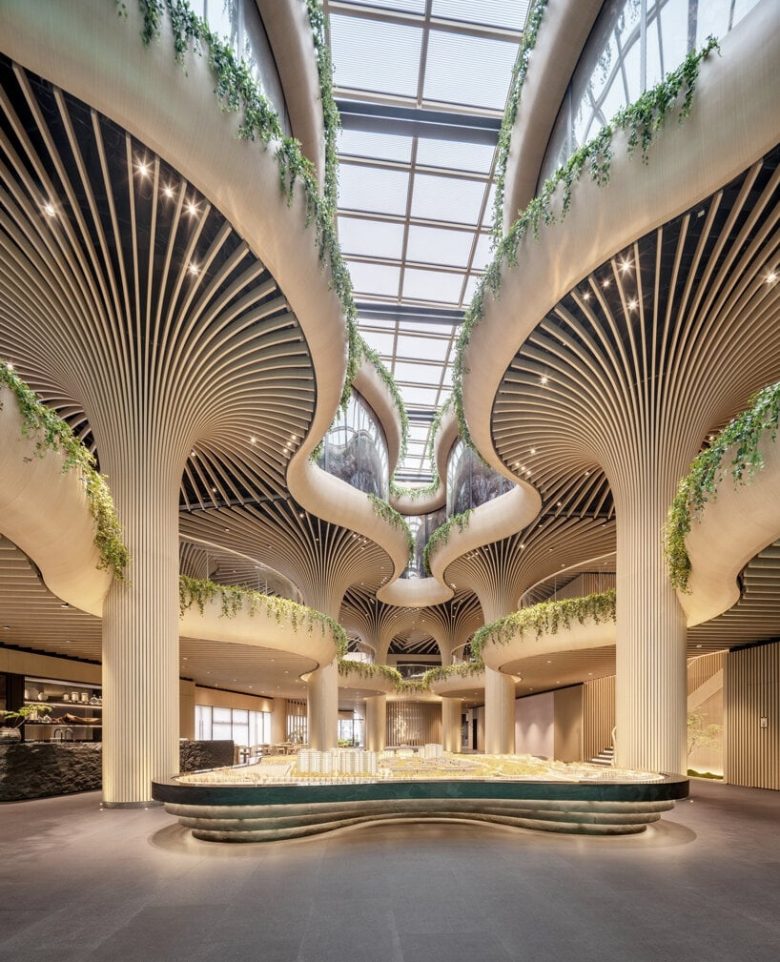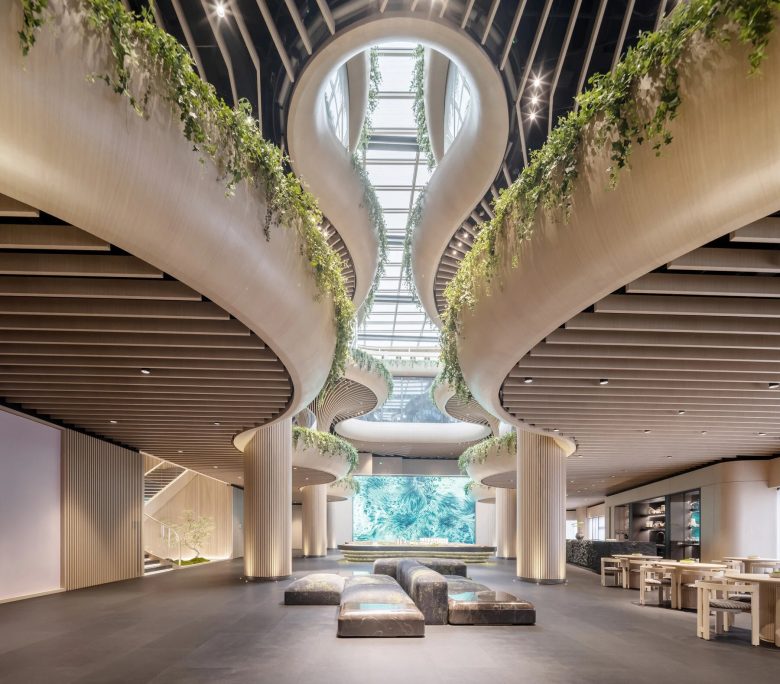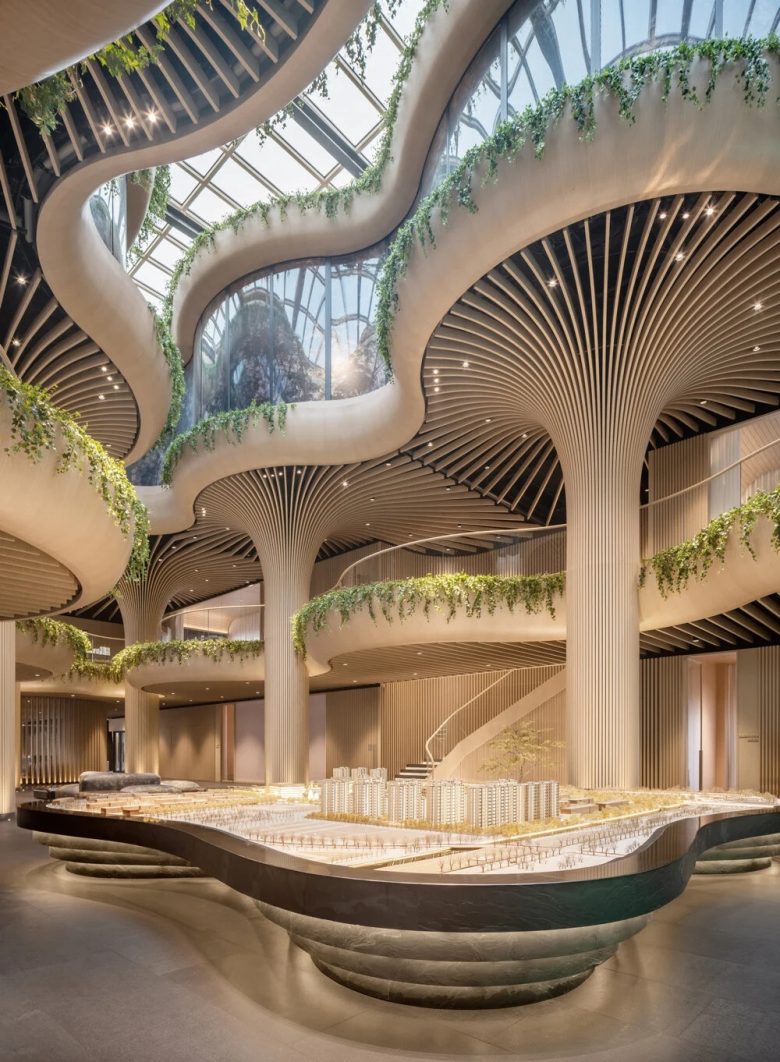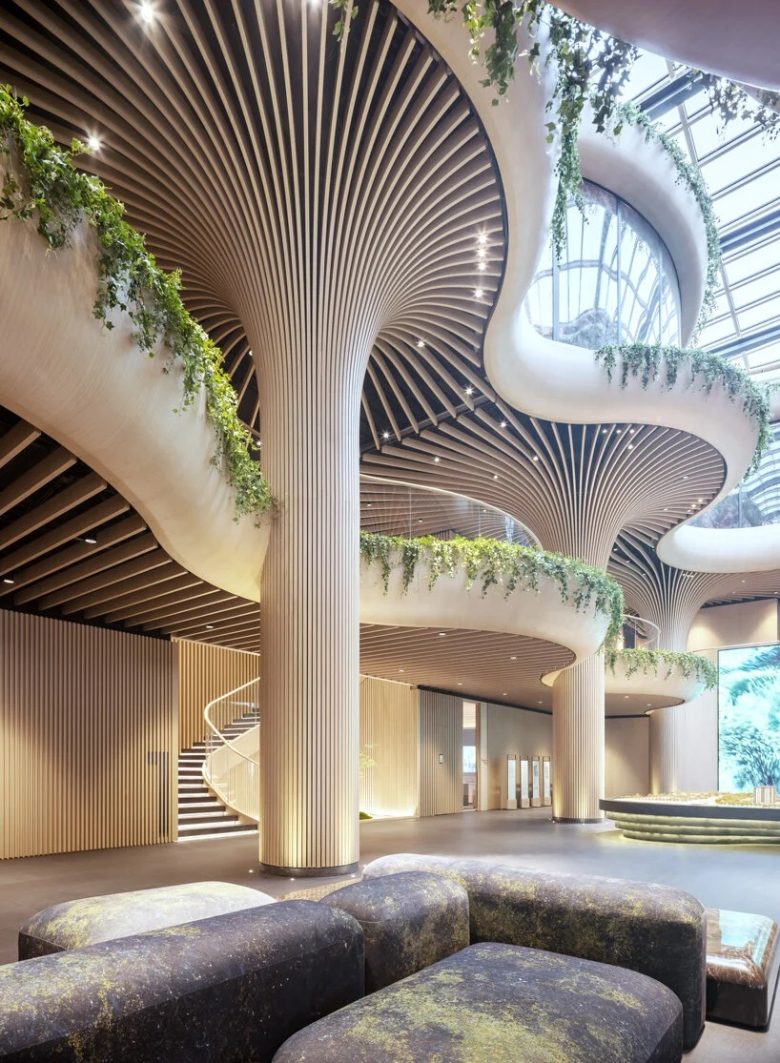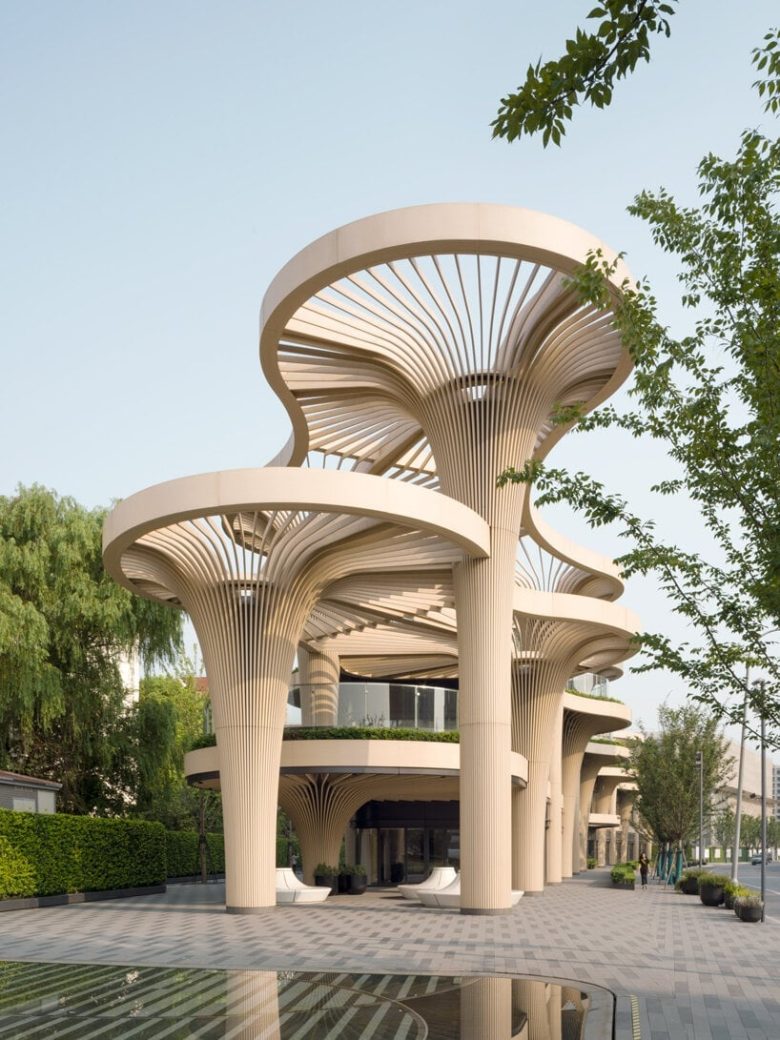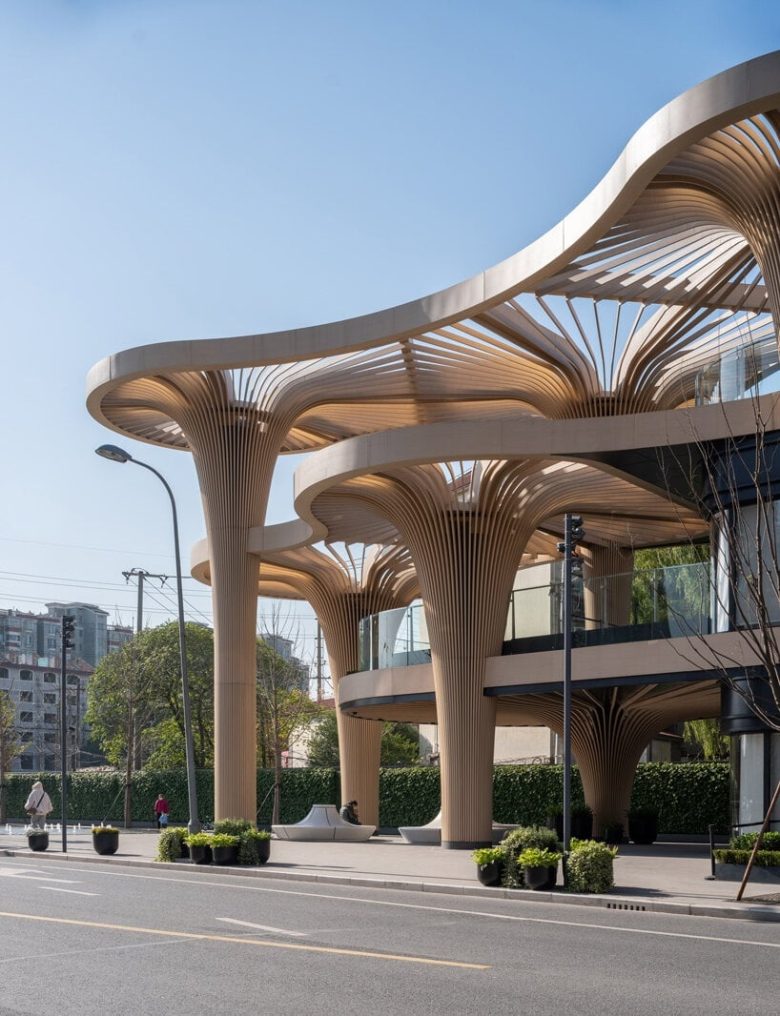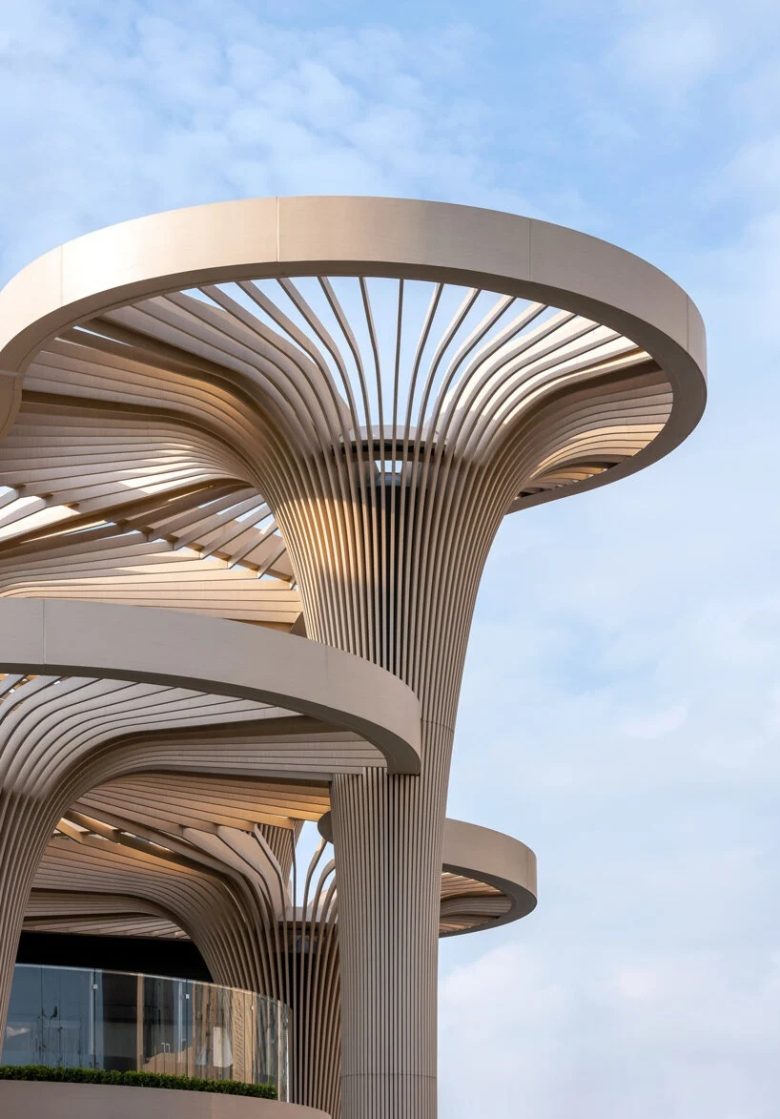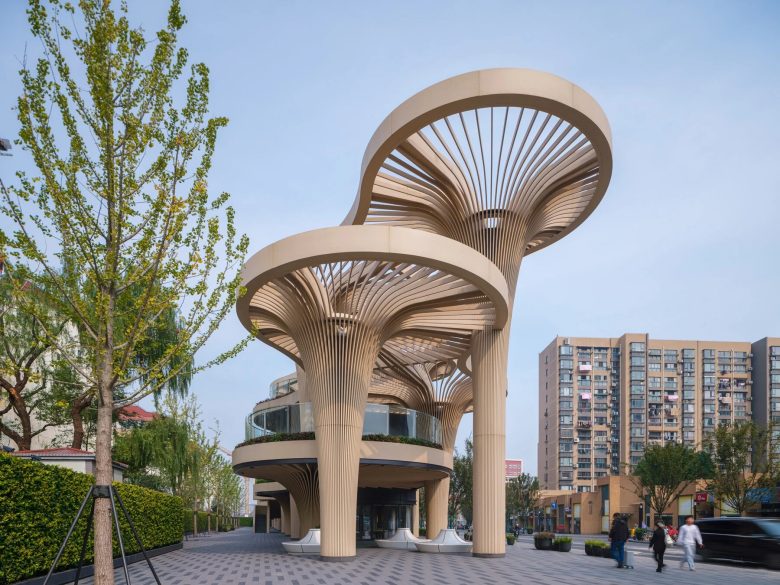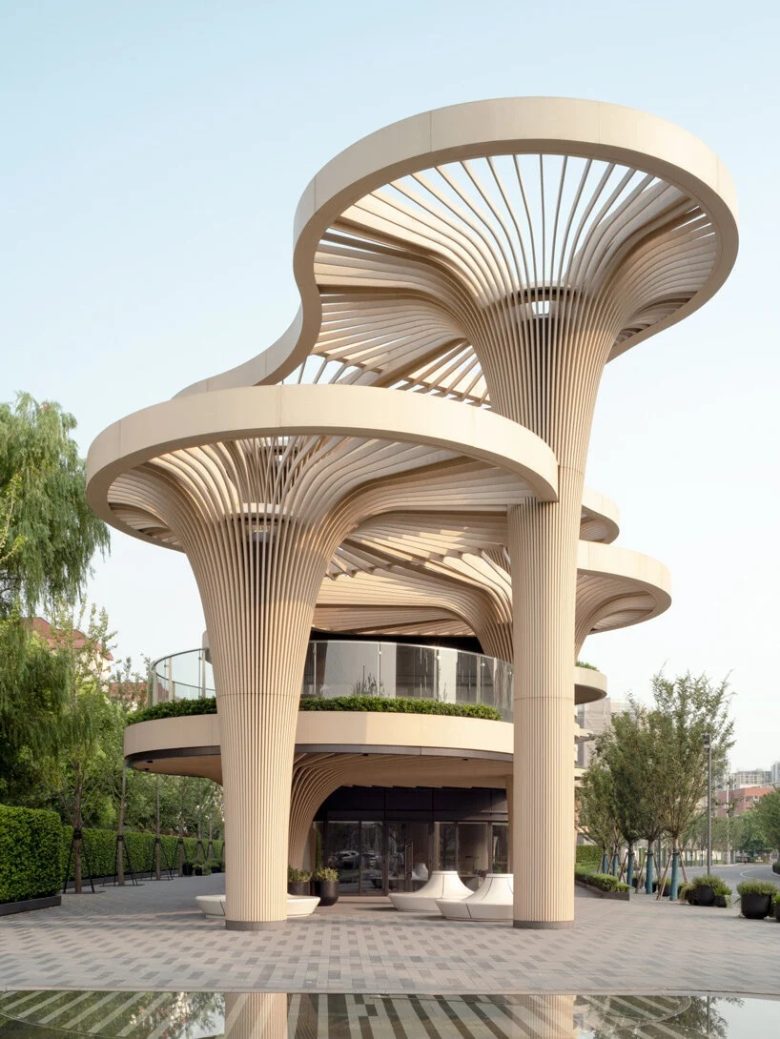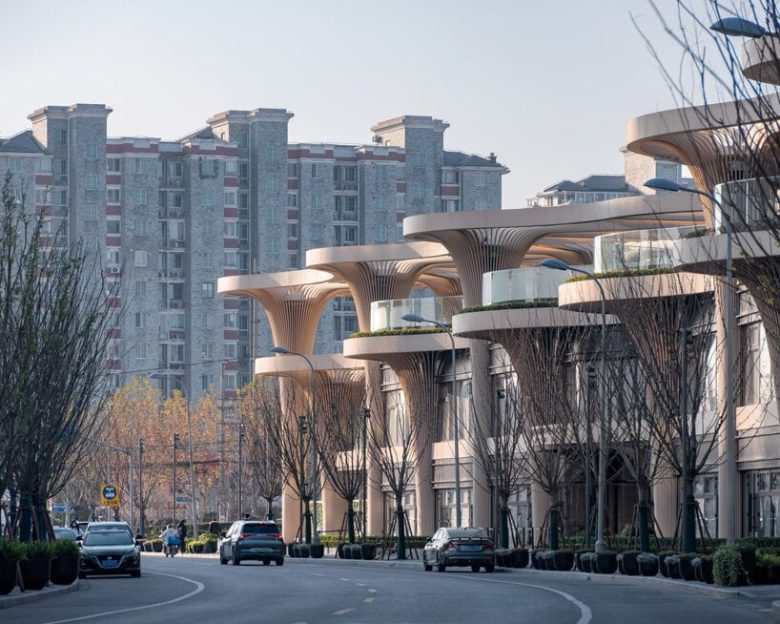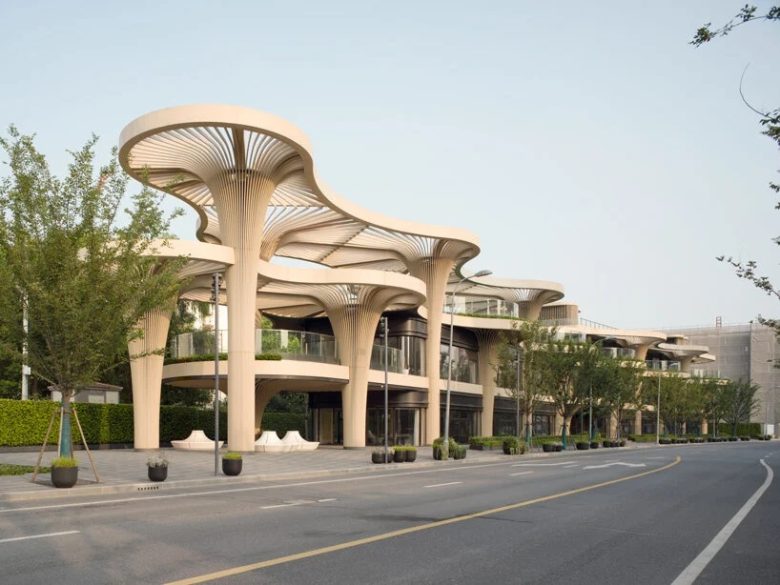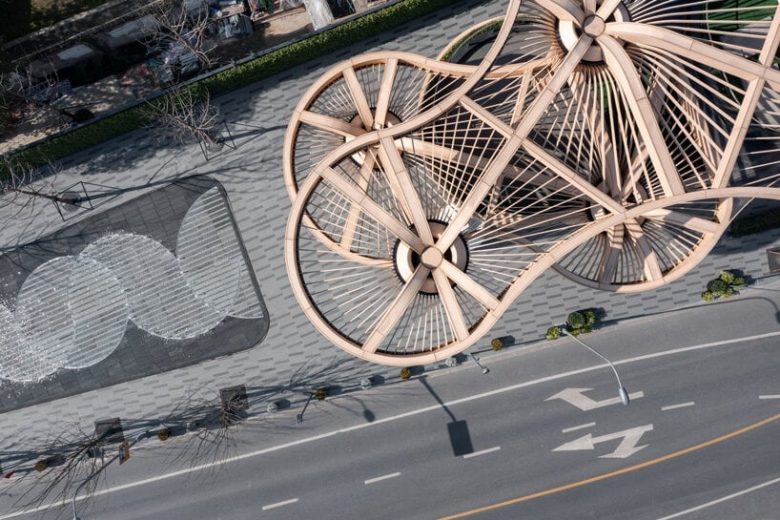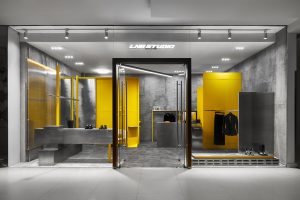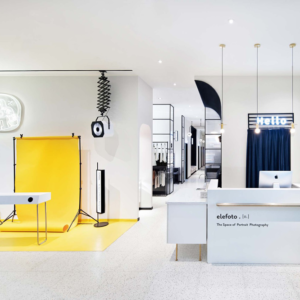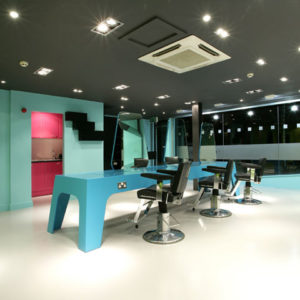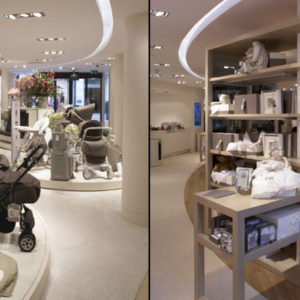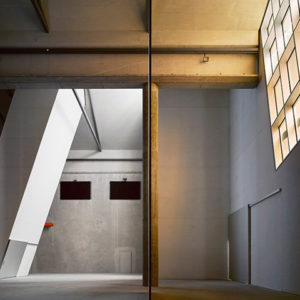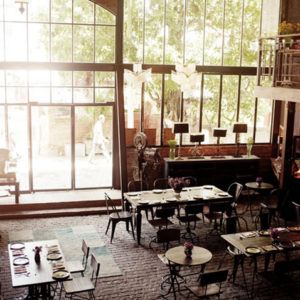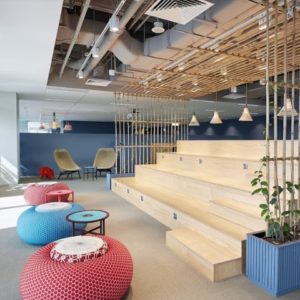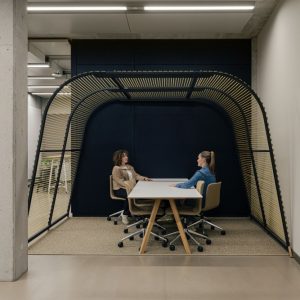
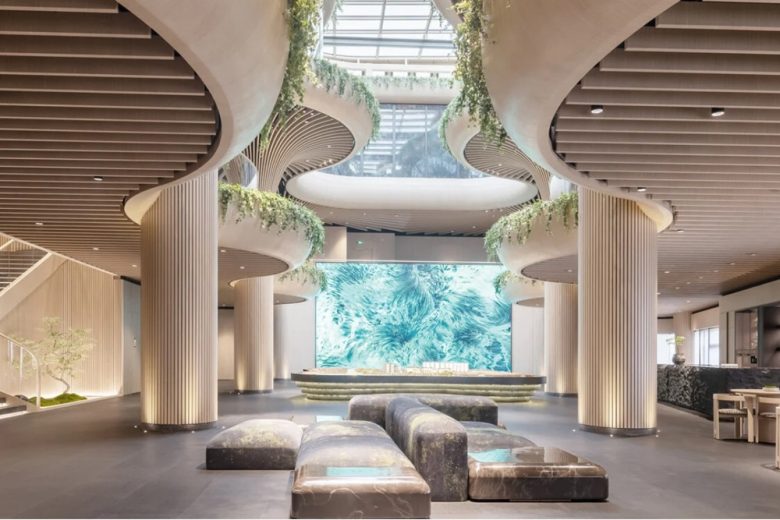
The long-awaited Solar Trees Marketplace, a futuristic creation by Koichi Takada Architects has recently opened its doors on the outskirts of Shanghai, China, and stands as a visual reminder of a greener and more sustainable future. Positioned on a site that used to be a dense forest just a few decades ago, the project is an initiative to reintroduce green spaces into this rapidly expanding city, drawing inspiration from the area’s historical past. The first phase of the retail space is now open and serves as a sales and display suite for an adjacent 155,000 square meters residential development, also designed by Koichi Takada Architects. The tree-like organic structure emerges with a biophilic architecture and acts as a welcoming entrance to the masterplan, emphasizing a pedestrian-friendly environment and green spaces within the urban setting. Thirty-two architectural ‘trees,’ inspired by Shanghai’s forests, form a protective canopy of photovoltaic cells, and similar to real trees, they offer shelter and shade while allowing fresh air to circulate through the spaces.
A Biophilic design that adjusts to people’s changing needs
The architects aimed to create a building capable of adapting and evolving over time. As new residents move into the neighborhood, the structure will transform into a dynamic hub designed to meet the changing needs of the community. This transformation, aligned with the vision of Koichi Takada Architects and the developers, aims to revive traditional Chinese marketplaces in a contemporary manner. The smooth transition between functions is a critical aspect of this design, showcasing the innovative potential of flexible and forward-thinking architecture. Over time, the structure will integrate with a row of native Camphor trees planted outside the marketplace, creating a serene oasis amid the urban surroundings. By merging natural elements with earthy colors, the project embodies the concept of biophilic architecture, which aims to establish a stronger connection between people and nature.
Moreover, the team focused on carefully controlling light and shade, enhancing aesthetics and practicality. Shading provides a respite from the sun, while natural ventilation reduces the reliance on artificial lighting and cooling, making the visitor’s experience more comfortable. Koichi Takada expressed his team’s surprise upon discovering that the site was filled with trees just a few decades ago. ‘We were shocked to learn that this site was covered in trees as recently as 1984. Our design seeks to start conversations around what can be achieved through design and create a living, breathing environment that inspires, nurtures, and adapts to the needs of both residents and the community.’ The project employs biophilic design principles and sustainable innovation, demonstrating the potential of architecture to bring nature back into our urban spaces. ‘I believe Nature holds the answers – and Architecture can start the conversation.’
Designed by Koichi Takada Architects
Photography by ZY Photography
